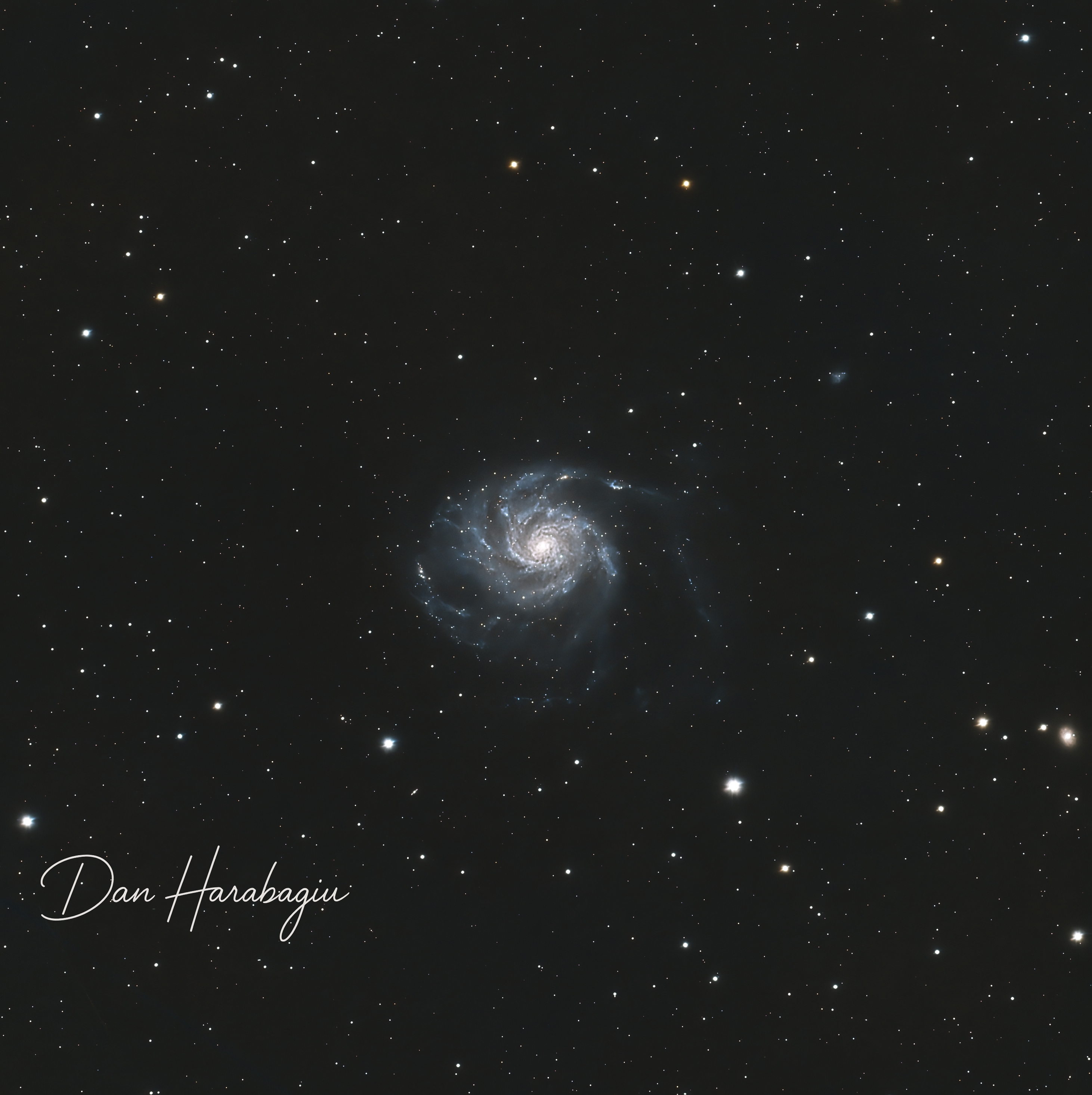 A full-frame capture of Messier 101 with spiral arms stretching into the cosmos.
A full-frame capture of Messier 101 with spiral arms stretching into the cosmos.
🌌 Overview
- Name: Messier 101 (M101)
- Nickname: The Pinwheel Galaxy
- Catalog: NGC 5457
- Constellation: Ursa Major
- Distance from Earth: ~21 million light-years
- Apparent Magnitude: ~7.9
- Size: ~28 × 26 arcminutes (larger than the Moon!)
- Type: Grand design spiral galaxy (type SAB(rs)cd)
✨ What We See
M101 is a spectacular face-on spiral galaxy, renowned for its:
- Extensive, asymmetric spiral arms filled with H II regions
- Luminous star-forming knots and dust lanes
- A bright central core surrounded by loose, winding arms
- Wispy extensions in the faint outer disk — especially visible in long exposures
🔭 Astrophysical Insights
- M101 is one of the largest disk galaxies in the Local Volume
- Features numerous star-forming regions, including giant H II complexes larger than those in the Milky Way
- Asymmetry is likely caused by gravitational interactions with companion galaxies (e.g., NGC 5477)
📷 Equipment Used
- Telescope: TS-Optics 80PHQ (544mm f/6.8 Quintuplet APO)
- Camera: SVBONY SV605MC (IMX533 Mono)
- Mount: Sky-Watcher EQ5 Pro
- Guiding: Off-Axis Guider with veLOX 178 C
- Filters: LRGB
- Software: NINA, PHD2, PixInsight, Photoshop
- Watermark: Custom transparent overlay
📝 Final Thoughts
M101 is a showpiece of the northern sky — a galaxy that not only dazzles with structure, but also reveals the dynamic nature of galactic evolution. Its grand spiral form and subtle asymmetries make it a rewarding target for wide-field imaging.
The Pinwheel Galaxy reminds us that even vast cosmic structures can possess delicate beauty.
Clear skies!